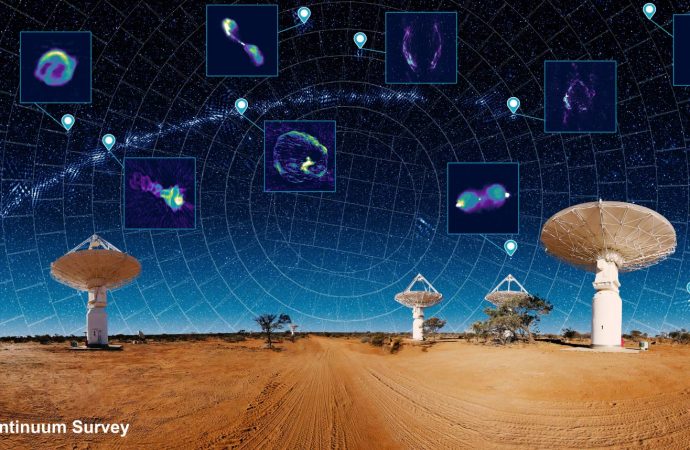Astronomers using CSIRO’s Australian Square Kilometre Array Pathfinder (ASKAP) have mapped approximately 3,000,000 galaxies in the observable Universe.
Source: Sci News
The ASKAP radio telescope was designed to be a survey instrument capable of quickly observing the whole accessible sky.
It is located at the Murchison Radio-astronomy Observatory (MRO) in Western Australia and is operated by the Commonwealth Scientific and Industrial Research Organisation (CSIRO).
ASKAP is an array of 36 12-m prime focus antennas. Each is equipped with a phased array feed that enables the simultaneous digital formation of 36 dual-polarization beams.
“ASKAP is applying the very latest in science and technology to age-old questions about the mysteries of the Universe and equipping astronomers around the world with new breakthroughs to solve their challenges,” said Dr. Larry Marshall, Chief Executive of CSIRO.
“It’s all enabled by innovative receivers developed by CSIRO that feature phased array feed technology, which see ASKAP generate more raw data at a faster rate than Australia’s entire internet traffic.”
Using the ASKAP telescope, CSIRO astronomer David McConnell and his colleagues from the Rapid ASKAP Continuum Survey (RACS) observed 83% of the entire sky.
Their result proves that an all-sky survey can be done in weeks rather than years, opening new opportunities for discovery.
The new data will enable astronomers to undertake statistical analyses of large populations of galaxies, in the same way social researchers use information from a national census.
“This census of the Universe will be used by astronomers around the world to explore the unknown and study everything from star formation to how galaxies and their super-massive black holes evolve and interact,” Dr. McConnell said.
With ASKAP’s advanced receivers, the RACS team only needed to combine 903 images to form the full map of the sky, significantly less than the tens of thousands of images needed for earlier all-sky radio surveys conducted by major world telescopes.
The 13.5 exabytes of raw data generated by the radio telescope were processed using hardware and software custom-built by CSIRO.
The final 903 images and supporting information amount to 26 terabytes of data.
“We expect to find tens of millions of new galaxies in future surveys,” Dr. McConnell said.
The team’s results were published in the Publications of the Astronomical Society of Australia.
Source: Sci News

































Leave a Comment
You must be logged in to post a comment.